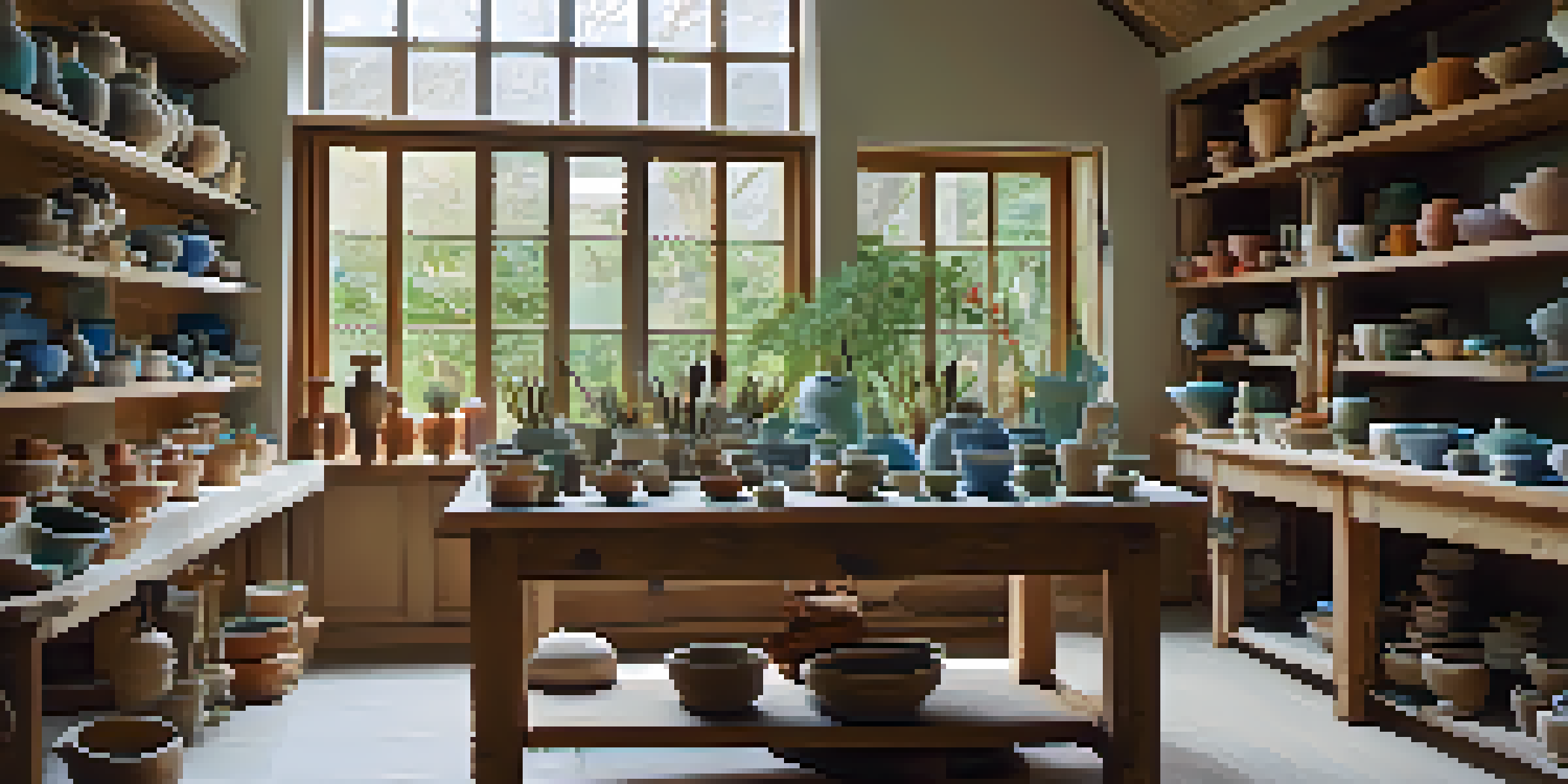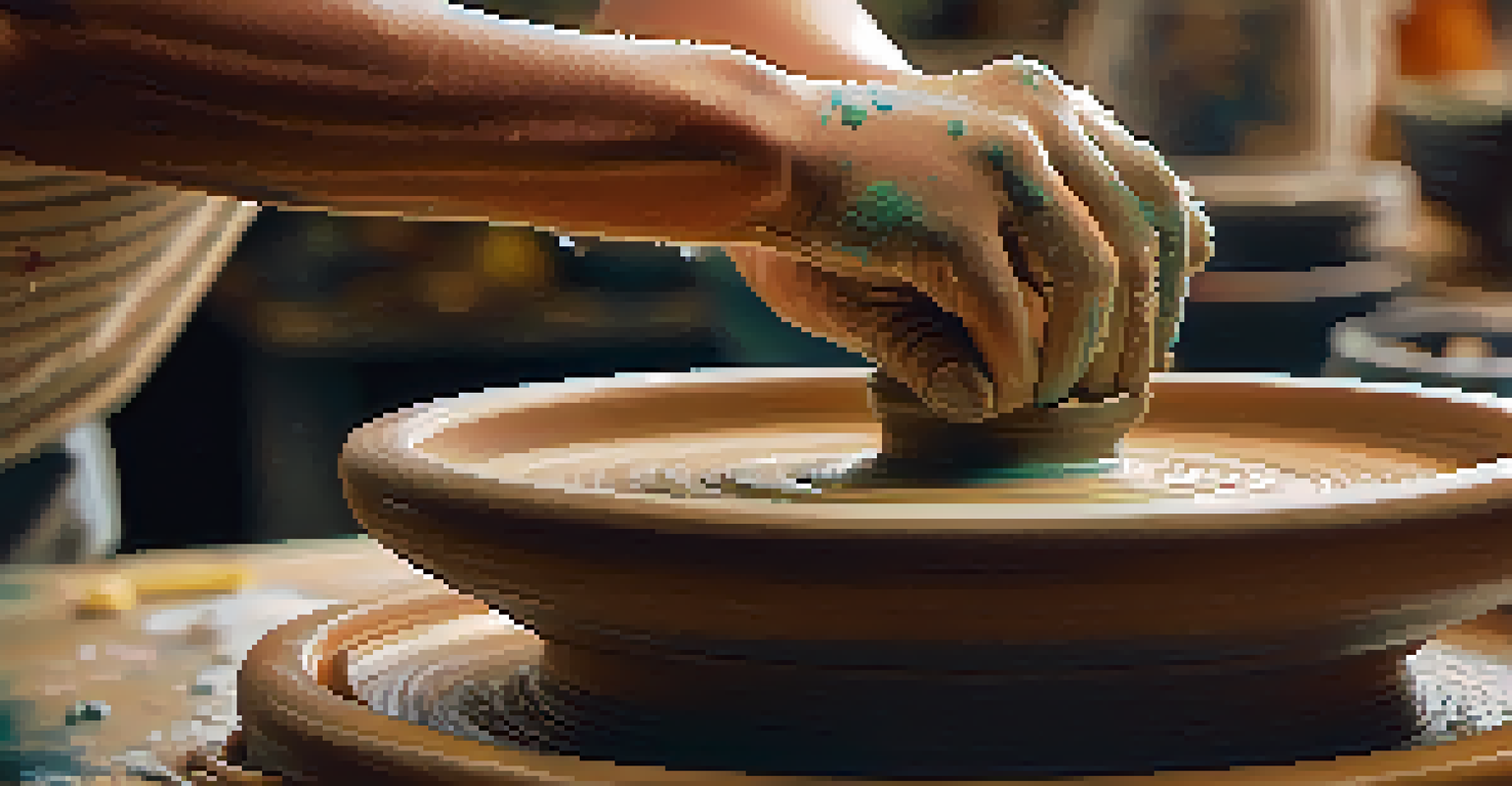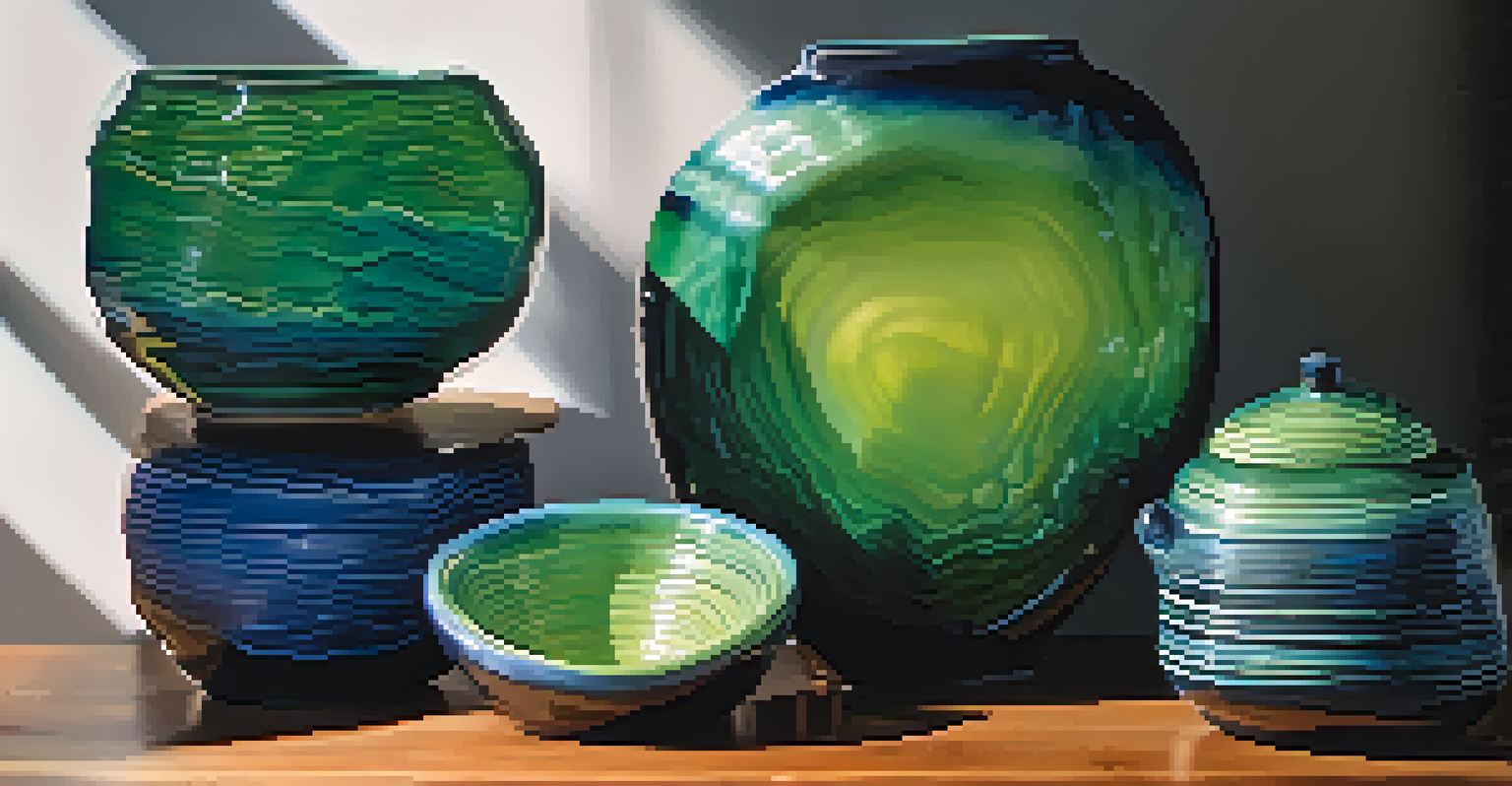Ceramic Sculpture: Techniques and Inspirations for Artists

Understanding the Basics of Ceramic Sculpture
Ceramic sculpture is a fascinating art form that combines creativity with craftsmanship. At its core, it involves shaping clay into three-dimensional objects, which can range from intricate figurines to large abstract pieces. Understanding the properties of clay is fundamental, as it dictates how the sculpture will behave during the creation process and firing.
The ceramic art is a beautiful combination of creativity and craftsmanship, transforming raw materials into stunning pieces of art.
The basic types of clay used in sculpture include earthenware, stoneware, and porcelain, each offering distinct characteristics. For instance, earthenware is known for its workability and vibrant colors, while stoneware is durable and ideal for functional pieces. Artists often choose their clay based on the desired outcome of their work, whether it’s aesthetic appeal or structural integrity.
Once artists grasp the basics of clay types, they can explore various techniques like hand-building, wheel-throwing, and sculpting. Each method brings its own unique challenges and rewards, allowing artists to express their individuality in the medium.
Essential Tools for Ceramic Sculpting
To embark on a ceramic sculpture journey, having the right tools is essential. Basic tools include a wire cutter, sponge, and various sculpting tools like loop and ribbon tools. These instruments help artists shape and refine their work, allowing for precision and creativity.

Additionally, a pottery wheel is a valuable asset for those looking to create symmetrical forms. While not every ceramic artist uses a wheel, it offers a different approach to shaping clay that can yield stunning results. Understanding how to use these tools effectively enhances an artist’s ability to bring their ideas to life.
Understanding Clay Types Matters
Different types of clay, such as earthenware, stoneware, and porcelain, each have unique properties that influence the sculpture's final appearance and functionality.
Finally, don’t overlook the importance of a kiln. This specialized oven is vital for firing the clay, transforming it from a fragile state to a durable, finished piece. Knowing how to operate a kiln and the different firing techniques can significantly impact the final outcome of a sculpture.
Exploring Different Techniques for Sculpting
Ceramic sculptors have a variety of techniques at their disposal. Hand-building, one of the most intuitive methods, involves shaping clay by hand without the use of a wheel. Techniques like pinch pots and coil building allow artists to create unique textures and forms that showcase their personal style.
Art is not what you see, but what you make others see.
On the other hand, wheel-throwing offers a different set of possibilities. This technique involves centering a lump of clay on a rotating wheel, enabling artists to create symmetrical pieces with smooth finishes. While mastering the wheel takes practice, it can lead to impressive creations that highlight an artist's technical skill.
Lastly, sculpting techniques such as carving and modeling can add intricate details to sculptures. By manipulating the surface of the clay, artists can create patterns and textures that enhance the visual appeal of their work. Experimenting with these techniques often leads to exciting artistic discoveries.
Inspiration Sources for Ceramic Artists
Finding inspiration is a crucial part of any artist's journey, and ceramic sculptors are no exception. Nature often serves as a muse, with organic shapes and textures sparking creativity. Many artists draw from landscapes, plants, and animals, translating these elements into their sculptures.
Cultural influences can also play a significant role in shaping an artist's work. Traditional pottery styles from various cultures provide a wealth of ideas, motivating artists to incorporate historical techniques and motifs into their contemporary pieces. This fusion of old and new can lead to innovative works that resonate with viewers.
Firing Techniques Shape Outcomes
The firing process, including bisque and glaze firing, is crucial for transforming clay into durable sculptures, affecting their strength and finish.
Moreover, personal experiences and emotions can inspire unique sculptures. Artists often channel their feelings into their work, allowing their life stories to unfold through their creations. This deeply personal connection can make a sculpture not only visually striking but also emotionally impactful.
Color and Glazing Techniques in Ceramic Art
Color plays a pivotal role in ceramic sculpture, as it can dramatically alter the perception of a piece. Artists often experiment with various glazes, which are glass-like coatings that add color and finish to the surface of the clay. Understanding how different glazes react during firing can lead to stunning outcomes.
There are numerous glazing techniques to explore, including dipping, pouring, and spraying. Each method offers different effects, enabling artists to achieve everything from a smooth, glossy finish to a textured, matte surface. Additionally, layering glazes can create complex color interactions that enhance the sculpture's visual depth.
It's important for artists to test their glazes before applying them to finished pieces. Small test tiles allow for experimentation without risking the primary sculpture. This practice not only helps in understanding how glazes behave but also fosters creativity in color selection.
The Role of Firing in Ceramic Sculpture
Firing is a critical step in the ceramic process, turning soft clay into a hardened, permanent form. There are different types of firing techniques, including bisque firing and glaze firing, each serving a specific purpose in achieving the desired result. Bisque firing prepares the clay for glazing, while glaze firing finalizes the piece.
Each firing type has its own temperature range, and understanding these nuances is key for artists. For example, stoneware typically requires higher firing temperatures than earthenware, which affects the durability and finish of the sculpture. Artists must be mindful of these specifications to ensure their work comes out as intended.
Inspiration Fuels Creative Expression
Ceramic artists draw inspiration from nature, culture, and personal experiences, which deeply influences their unique sculptural creations.
Moreover, alternative firing methods, such as raku or pit firing, can add unique characteristics to sculptures. These techniques often produce unpredictable yet beautiful results, encouraging artists to embrace spontaneity in their work. The firing process is not just a technical step; it's an opportunity for creativity.
Showcasing and Selling Ceramic Art
Once a ceramic sculpture is complete, the next step for many artists is showcasing and selling their work. Various platforms exist for this purpose, including art galleries, craft fairs, and online marketplaces. Each venue offers unique advantages for reaching potential buyers and gaining exposure.
Social media has also become a powerful tool for artists to connect with audiences. Platforms like Instagram and Pinterest allow ceramicists to share their work, engage with followers, and build a brand. Showcasing the creative process through behind-the-scenes content can create a personal connection with potential buyers.

Finally, understanding pricing and marketing strategies is crucial for selling ceramic art. Artists should consider the time, effort, and materials that went into creating each piece when determining its price. Additionally, effective storytelling about the inspiration and process behind the sculpture can enhance its appeal to buyers.